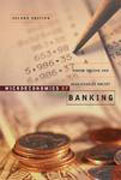
Over the last thirty years, a new paradigm in banking theory has overturned economists' traditional vision of the banking sector. The asymmetric information model, extremely powerful in many areas of economic theory, has proven useful in banking theory both for explaining the role of banks in the economy and for pointing out structural weaknesses in the banking sector that may justify government intervention. In the past, banking courses in most doctoral programsin economics, business, or finance focused either on management or monetary issues and their macroeconomic consequences; a microeconomic theory of banking did not exist because the Arrow-Debreu general equilibrium model of complete contingent markets (the standard reference at the time) was unable to explain the role of banks in the economy. This text provides students with a guide to the microeconomic theory of banking that has emerged since then, examining the main issues and offering the necessary tools for understanding how they have been modeled.
- ISBN: 978-0-262-06270-4
- Editorial: MIT PRESS
- Encuadernacion: Cartoné
- Páginas: 384
- Fecha Publicación: 30/04/2008
- Nº Volúmenes: 1
- Idioma: Inglés
